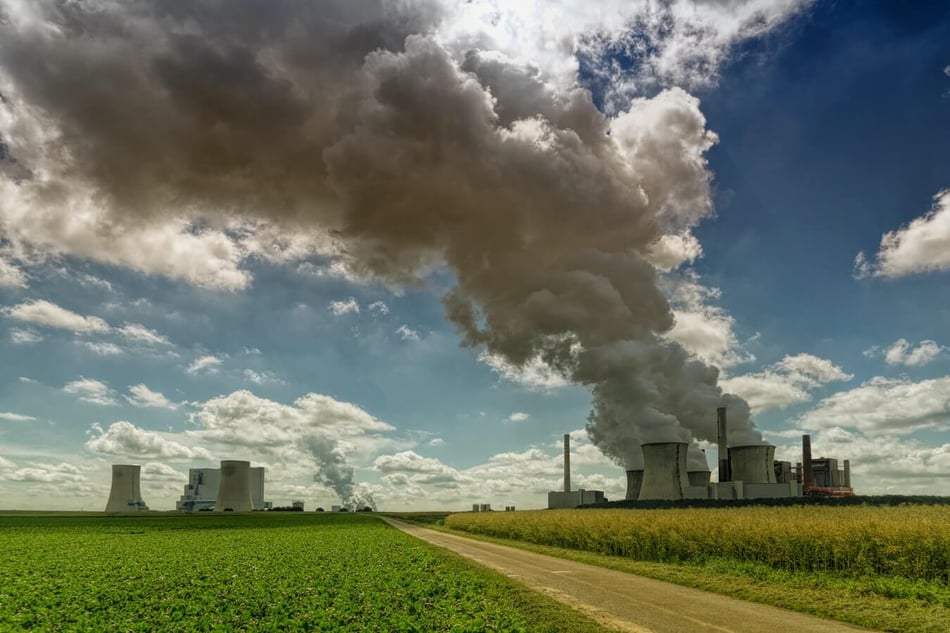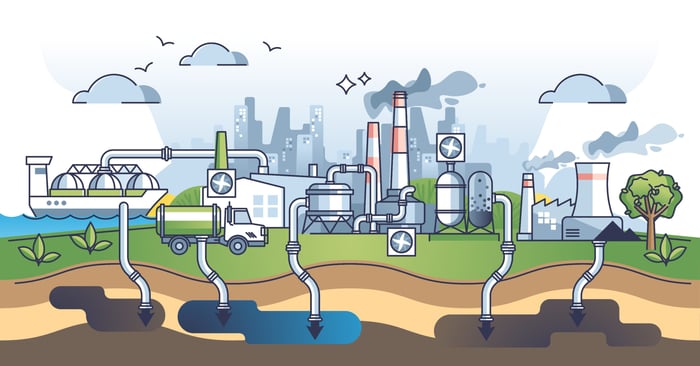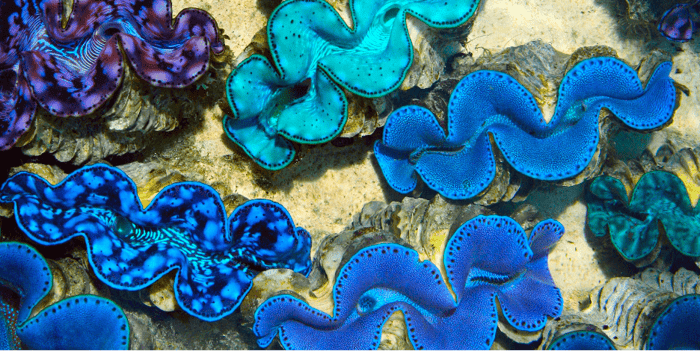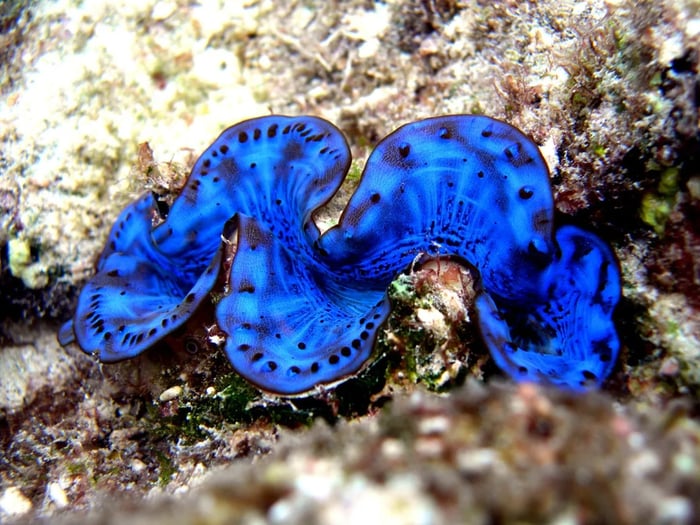What exactly is the novel carbon sequestration approach being pioneered by IMARCS?

Jordan
4
min. read

Carbon dioxide, or CO2, has become one of the best-known gasses, arguably on par with oxygen and likely more well-known than nitrogen, which is 2000 times more abundant in Earth's atmosphere. The reason for this is the outsized impact that CO2 has on climate: while only making up 0.04% of atmospheric composition (or 421 parts per million [ppm]), carbon dioxide is a relatively potent greenhouse gas (GHG), which means it traps heat. This is done by allowing shortwave radiation from the sun to reach the planet's surface before insulting the longwave radiation emitted back out towards space, much like a greenhouse (hence the name). A runaway greenhouse effect from extremely high levels of CO2 is what makes Venus the hottest planet in the solar system instead of Mercury, the planet closest to the sun.


Image Credits - https://www.automation.com/en-us/articles/december-2023/control-valve-supercritical-carbon-dioxide-pipe
There are other more potent GHGs, such as methane, but there is something very unique about CO2: it is released in large quantities from modern industrial life, courtesy of fossil fuel consumption. It might be tempting to view CO2 as a pollutant or an "evil" substance, as it is often touted as the harbinger of our collective march to doom. But this is not true. Without CO2, the planet would be nearly inhospitable as temperatures would be below freezing in most places throughout most of the year. And without fossil fuels, all of the advancements that make modern life possible and objectively better than pre-industrial times - including advancements in water treatment, disease eradication, education, scientific understanding, food security, overall health, and countless other improvements - would not have been possible; none of us would be here, and the world would be a much worse place. At least at this moment.
If CO2 continues to increase, this could change.
Carbon dioxide, like almost every other gas in the atmosphere or mineral in the human body, is beneficial in the right amount. Magnesium is essential for life, and it is recommended that adult human beings consume around 400 milligrams of this element per day; however, if one were to ingest 400 grams in one day their body would completely shut down. CO2 is similar in this sense. Levels have been higher, and lower, in the past, with drastic changes in climate accompanying these fluctuations. Life has always survived and adapted, and the Earth marches forward. But for our species - and the countless other species that exist in a world where CO2 concentrations have hovered around 200 ppm for a very long time - going past the 400 ppm mark (and climbing) is changing the trajectory of our climate, whether we want to deal with it or not.
We have slowly began to explore solutions for meeting energy consumption needs without the associated carbon emissions, with slowly being the operative word. There is still much opposition to nuclear energy, which is unequivocally the most abundant, reliable carbon-free energy technology currently available, and sustainable aviation and shipping fuels will likely remain out of reach in commercial quantities for years to come. All of this signals one clear message: if we want to slow the accumulation of CO2 in the atmosphere, we need to sequester it somewhere other than the air.
Carbon dioxide, like almost every other gas in the atmosphere or mineral in the human body, is beneficial in the right amount. Magnesium is essential for life, and it is recommended that adult human beings consume around 400 milligrams of this element per day; however, if one were to ingest 400 grams in one day their body would completely shut down. CO2 is similar in this sense. Levels have been higher, and lower, in the past, with drastic changes in climate accompanying these fluctuations. Life has always survived and adapted, and the Earth marches forward. But for our species - and the countless other species that exist in a world where CO2 concentrations have hovered around 200 ppm for a very long time - going past the 400 ppm mark (and climbing) is changing the trajectory of our climate, whether we want to deal with it or not.
We have slowly began to explore solutions for meeting energy consumption needs without the associated carbon emissions, with slowly being the operative word. There is still much opposition to nuclear energy, which is unequivocally the most abundant, reliable carbon-free energy technology currently available, and sustainable aviation and shipping fuels will likely remain out of reach in commercial quantities for years to come. All of this signals one clear message: if we want to slow the accumulation of CO2 in the atmosphere, we need to sequester it somewhere other than the air.
What is carbon sequestration?
Several noteworthy international accords, agreements, and protocols have arisen in the past 30+ years: the 1992 UNFCCC (Rio Conference), the 1997 Kyoto Protocol, and, most recently, the establishment of the 2015 Paris Agreement, which most countries are currently using to establish emissions reductions targets. While all these events and agreements emphasized the need to decarbonize the global economy, only recently has a focus on negative-emission technologies (NETs) and solutions been advocated to avert the worst impacts of climate change. NETs were hindered early on - and continue to be hindered in some areas by some people - by concerns that technical emissions reduction solutions might harm decarbonization efforts. However, as the general understanding of the global climate challenge deepened, coupled with international inaction to achieve any meaningful reductions, the idea of NETs started gaining traction. One of the most promising forms of NETs is blue carbon, where nature-based solutions can be leveraged to store carbon in marine ecosystems through marine Carbon Dioxide Removal (mCDR). Although there has been almost zero research looking at how reef-dwelling calcifying organisms could be utilized as a part of mCDR, they nonetheless could have the ability to help with carbon removal - as well as to help restore reef biodiversity adversely affected by climate change.
What we are doing at IMARCS
At the IMARCS Foundation, we are exploring the possibility of utilizing giant clams as an enhanced nature-based solution to sequester carbon in the shells of these clams. This will ideally increase the uptake of CO2 that has been dissolved in saltwater contained within in-shore mariculture tanks for net-negative carbon sequestration. Other calcifying organisms, including various species of smaller clams, have been explored as potential carbon sinks due to their ability to incorporate dissolved CO2 into their shells through a process known as biomineralization. Since giant clams have not been explicitly studied in this context, we are pioneering research into the carbon sequestration potential of the world's largest bivalves and the numerous co-benefits that could be derived from their propagation.
At the IMARCS Foundation, we are exploring the possibility of utilizing giant clams as an enhanced nature-based solution to sequester carbon in the shells of these clams. This will ideally increase the uptake of CO2 that has been dissolved in saltwater contained within in-shore mariculture tanks for net-negative carbon sequestration. Other calcifying organisms, including various species of smaller clams, have been explored as potential carbon sinks due to their ability to incorporate dissolved CO2 into their shells through a process known as biomineralization. Since giant clams have not been explicitly studied in this context, we are pioneering research into the carbon sequestration potential of the world's largest bivalves and the numerous co-benefits that could be derived from their propagation.

How the IMARCS approach is different from other carbon sequestration solutions
Our approach to using giant clams for carbon sequestration involves adjusting in-shore tank water chemistry to discern if there is a measurable difference in dissolved CO2 uptake. This is being done by measuring carbon sequestration, CO2 release rates within the tanks, and measuring clam shell size and weight to see if more carbon is being stored in the form of calcium carbonate (CaCO3). Increasing pH should allow for more carbon to dissolve in the water, which should then precipitate more CaCO3 in clam shells. Furthermore, increasing salinity will result in higher concentrations of hydroxyl ions, which will increase the availability of carbonate and should, therefore, increase carbon uptake within giant clam shells.
With this research, we hope to effectively show that this process is carbon-negative and can be a viable form of carbon sequestration. If successful, this process could then be replicated in numerous mariculture facilities in any location in the world that would permit giant clam mariculture, and perhaps even with different calcifying organisms such as certain types of corals.

Image Credits - https://www.saevus.in/the-giants-of-the-ocean-bed/
While we cannot yet determine if this is a viable - and attainable - means of net-negative carbon sequestration, this should still be viewed as a promising early-stage solution for helping to address climate change in a novel and beneficial manner.
Featured Image Credits - File photo of a coal fired power plant. PHOTO: PIXABAY